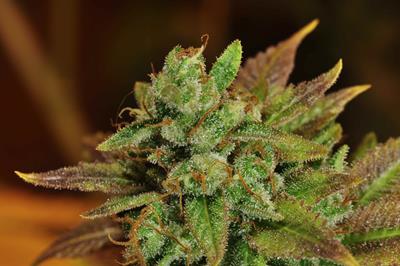
Friday October 9, 2015
By Tyler Terps
 Education
Education
Buying cannabis flowers is crucial to the process of smoking weed. Catching up with your budtender is a personal experience that can be both full and lacking, depending on the surrounding market. Doing so in a legal state gives you a regulated, educational, and safe ways to purchase high-grade marijuana. On the contrary, purchases in illegal states introduce the chance of being arrested along with a higher chance of contamination, misinformation, and overpriced product.
Using cannabis for medicinal benefit demands research, access, and the patience for trial and error. Even if you’re not seeking relief for any ailments, it’s important to understand what the potential effects of your new stash are. Knowing things like if it’s a sativa or indica will help you figure out whether or not the high will be all in the head, or if you should expect a relaxing body high instead. The CBD to THC ratio will dictate how much pain relief you get from your medicine versus how much of the psychoactive effects will you endure. It’s important to keep these things in mind when at the dispensary or your caregiver’s house:
1. lndica vs. Sativa vs. Hybrids
The ratio of indica to sativa can be the difference between a night of sleep and a night of pure energy and creativity. Usually a pleasurable mixture of both is desired but any hybrid will typically have a dominant side. Looking at the big picture, most strains are hybrids because of the cross breeding that has gone on over time since cannabis genetics were first experimented with.
Indicas are often plants that stay under six feet with deep green leaves and originated around Afghanistan, Pakistan, and India. These more commonly found types of cannabis give off more of a body high that leaves the user more tired and relaxed than anything. The higher presence of CBD relieves anxiety and pain more than sativa does.
Sativas are usually taller plants when compared to indicas and originated closer to the equator. The effects from cannabis in this category are used for their antidepressant-like effects. The cerebral and uplifting high gives a lot of people the start that they need for the day.
2. How Does it Smell?
A great way to gauge the quality of your cannabis is to do an old break-and-sniff check by cracking open one of the nugs and putting your nose to it. Bud can give off scents that recall fruits, gasoline, skunk, and earthy tones. Some strains will smell moldy or strongly of ammonia, which is a great indicator that what you have is likely no good. If there’s mold, it typically means that the bud wasn’t cured properly. Some strains naturally have a strong chemical smell but don’t actually have any chemicals sprayed on them. It’s important to know that it’s grown by a trusted source especially if you have doubts of your initial impression.
3. What Type of Strain is it?

Jilly Bean
Cannabis has countless different strains which are variations of the plant and its flowers. Some strains are named after where they were originated, while others recall scents, tastes, or effects that it gives off. Do your research about the strains, because perhaps you’ve tried something with similar genetics. While at the shop, ask about things like its compatibility with certain ailments and how effective it is in treating them. Perhaps you know that you don’t like Romulan, so you may want to stay clear of Golden Goat, which contains the sativa strong type of marijuana. Keeping track of what you’ve tried and what you thought can be helpful in the long-term search for what works for you.
4. How it Looks
Cannabis can have different traits in appearance as well which helps gauge its quality and freshness. Sometimes the best stuff doesn’t look like it, and other times marijuana that looks amazing could end up leaving a bad taste in your mouth. Usually buds with orange and red hairs come from the top shelf, but lacking them could just mean that they’re not in the genetics of that specific strain. The colors that can be found in raw marijuana go from dark and light greens, to reds, oranges, purples, and sometimes browns. Again, do your research to know the quality of your bud.
5. Cannabidiol to Tetrahydrocannabinol Ratio
Tetrahydrocannabinol and Cannabidiol are phytocannabinoids that make up cannabis resins and are used to treat certain conditions according to ratios of the two. THC is the main psychoactive phytocannabinoid and is most known amongst the 84 other known cannabinoids. Those that suffer from pain can use strains with high THC as a mild to moderate analgesic. Aside from relieving pain, it also promotes relaxation, sleep, and fatigue. Those that take a dose of THC will find their visual, auditory, and olfactory senses will be altered, which is the most commonly celebrated aspect of the high. A lack of appetite can be relieved by the stimulation provided by the phytocannabinoid.
Cannabidiol (CBD) is another popular phytocannabinoid, which accounts for up to 40% of the plant’s extract. Patients that suffer from a rare form of epilepsy known as Dravets Syndrome have found treatment with CBD to be very effective because it greatly reduces seizures when present in the body. Its antipsychotic effects have also been known to aid in for Schizophrenia treatment and people suffering from Social Anxiety Disorder can be made a little calmer with Cannabidiol. These are just a few of the purposes that the cannabis plant serves in the medical field. If you’re seeking a strain to start with, look for ones like Charlotte's Web or ACDC that are bred to be rich in CBD and low in THC
Photo Credit: PotGuide.com (license)







